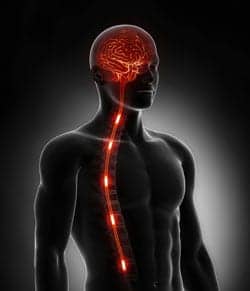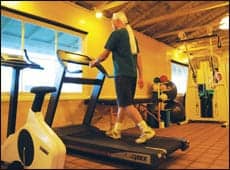
Researchers then trained the mice to use their left front paws to retrieve food pellets from a dispenser. The animals were given a “foot-fault test” to see how well they could walk on an unevenly spaced grid. Researchers say they then divided the mice into four groups. In the first group the carotid arteries were blocked with a suture for one hour, replicating the way in which a blood clot blocks the flow of blood to the brain in a stroke. Following the suture’s removal, blood flow was restored and the animals were provided additional surgery to severe the axons of the corticospinal tract. The other groups of mice were either given no surgery or “sham” surgery, allowing them to be used as control groups.
The release notes that the single-pellet and foot-fault tests were given to the animals 3 days post-surgery, then weekly for 14 to 28 days to reassess dexterity, the amount of “stroke” damage to voluntary movements, and the degree of recovery from lab-induced “stroke.”
Yi Li, MD, Henry Ford neuroscientists, lead study author, articulates the study’s results, noting, “Severe behavioral deficits of the left forepaw were evident in all of the mice three days after stroke. All animals showed significant improvement 14 days after surgery. This recovery progressed in those mice whose axons were not severed.” However, Li adds, in mice whose axons had been severed, no significant recovery was exhibited.
Li goes on to report that “axonal remodeling in the spinal cord” may offer researchers a treatment target that may hold promise in the development of rational therapeutic approaches geared toward enhancing the neurological recovery for many chronic stroke patients.
Researchers add that if the treatment can be developed, it would hold implications not only for stroke patients, but also for patients with chronic spinal cord damage.
Source: Henry Ford Health System





